EASIER MEADOW PREP
Genesis
In my previous blog post, I described various ways to prepare the ground for a meadow. With that said, I admit to not following any of what I wrote about ground preparation for the meadow here on the farmden. Not that my instructions were wrong. As the old Chinese proverb goes, “There are many paths to the top of the mountain, but the view is always the same.” Meadows also.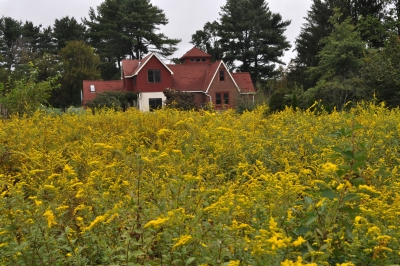
Last week’s meadow prep is geared to the meadow steward who wants to be presented with a riot of color for as long as possible. That view necessitates the killing of existing vegetation and sowing seeds or setting out small plants of desired species.
My own meadow began life under the ownership of my elderly neighbor who, with two riding lawnmowers helmed by her granddaughter and her husband, maintained the area as a lawn. Twenty-five years ago I purchased that acre and three-quarters. Not wanting to continue that weekly or biweekly mowing jibed with my meadowly aspirations. I was ready to graduate from my existing 200 square foot meadow (on my quarter acre) to a one acre one.
My meadow preparation was easy — mowing just once a year. Not that the once-a-year mowing was easy; in this bottomland soil, plant growth is lush. Two riding mowers could not have made a dent in the mix of grasses and other herbaceous vegetation that towered to four foot height by summer’s end. I initially went at it with a scythe. (Not just any old, American style scythe such as you see at flea markets and decorating barn walls. The scythe was an Austrian style scythe with a straight handle and a blade hammered razor sharp and whetted after every 15 minutes of use, purchased from scythesupply.com.)
The vegetation was too much for even me and my scythe. After recovering from a case of golf (from scything!) elbow, I purchased a small farm tractor with a brush hog attached. The scythe is still useful for gathering some hay for mulch or to feed my compost pile, and for reaching places inaccessible to the tractor.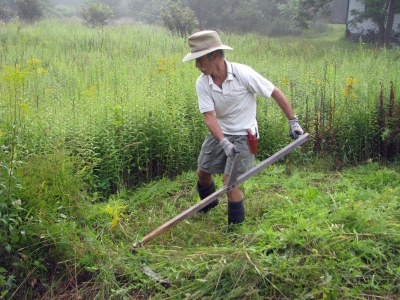
Natural Progression
But I digressed. What happens to a field left to its own devices? Herbaceous vegetation fills it, the lushness, the kind, and the amount depending on location, climate, and weather. Here, at least initially, it was mostly grasses since, after all, that’s mostly what could tolerate the weekly or biweekly work of two riding lawnmowers.
My meadow initially presented little color besides green. Not that the waves of grassy leaves topped with seedheads weren’t a pretty sight. I wasn’t aiming for riots of color.
Over time the character of the meadow has changed. Queen Anne’s lace (or, less whimsically, “wild carrot”) moved in, their white umbels staring skyward above the tallest grasses. 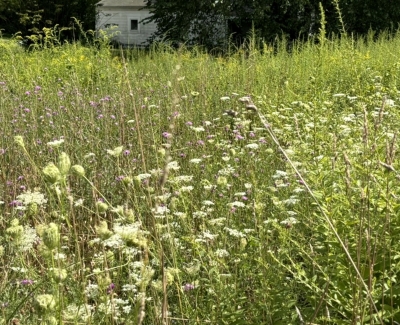 Flower stalks of sky-blue chicory dotted the field. With more time large patches of purple monarda flowers appeared.
Flower stalks of sky-blue chicory dotted the field. With more time large patches of purple monarda flowers appeared. 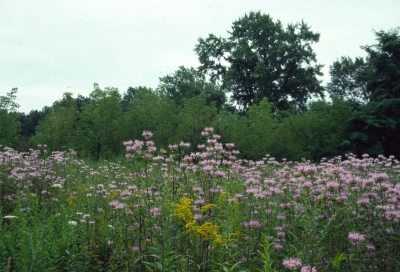 Then goldenrod, three species, two that are currently in bloom and another that will begin about when the show of the first ones are making their exit.
Then goldenrod, three species, two that are currently in bloom and another that will begin about when the show of the first ones are making their exit.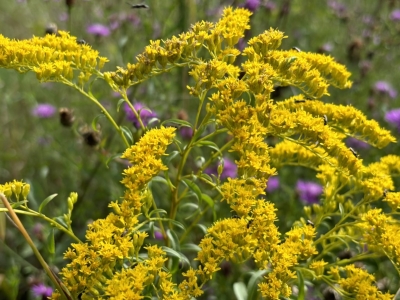
Mostly, besides what I cut with my scythe during the growing season, I brush hog the whole field in late fall, although I’ve sometimes waited until early spring. The case for late fall mowing is one less thing to do in spring’s hectic gardening season. The case for spring mowing is to leave seedheads and stalks for wildlife food and overwintering.
Not mowing, for most fields in regions with adequate rainfall, would set the stage for inroads of woody shrubs and vines with, on their heels, trees. Annual mowing keeps that transition at bay, but even under those conditions woody plants begin to make inroads. After about 20 years of my doing nothing more than brush hogging once a year, poison ivy, multiflora rose, wild grape, sumac, and blackberries were becoming increasingly evident. Even some cherry, pin oak, ash, and red maple trees began making their entrance.
I figured that one season of more than one mowing might reverse that trend. So that spring I put the mower deck on the tractor and mowed it — well, not quite like a manicured lawn, but repeatedly.
My hunch was right. The following growing season, the field was almost all grass, unmown grass allowed to grow full height and eventually capped by seed heads. And not a uniform carpet of the same grass but a mix that included Kentucky bluegrass, sweet vernal grass, and orchard grass, to name a few of the species. In the years that followed, more colorful flowering plants — old friends like fleabane, goldenrod, clovers, and Queen Anne’s lace — inched their way back in.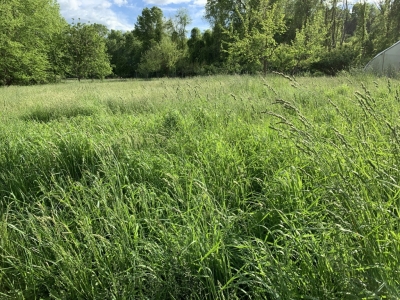
Going Forward
Even those riotously colorful meadows I previously alluded to, unless meticulously manicured, will revert over time to plants that tolerate once a year mowing or whatever the mowing schedule is. That riot of color had better be appreciated for the few years that it paints the meadow.
No matter. With timely mowing, settle back and appreciate the calmer beauty of the established meadow. But “established” is too strong a word for a meadow. I look out on my meadow and each year enjoy its subtle changes, changes that depend on when I mow, and also what other plants are standing by with seeds or running roots, variations in the climate and the weather.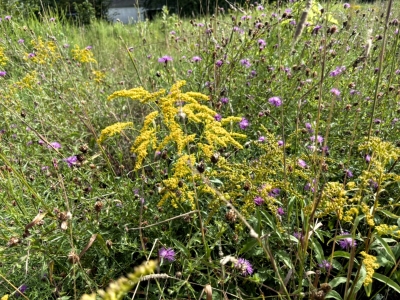
Meadows are not forever, even without human encroachment. I’m not trying to maintain my meadow in a romanticized primordial state; I just like to look out and enjoy the grasses and colorful flowers each year and, irrespective of my annual mowing, how they morph into a different scene through the years.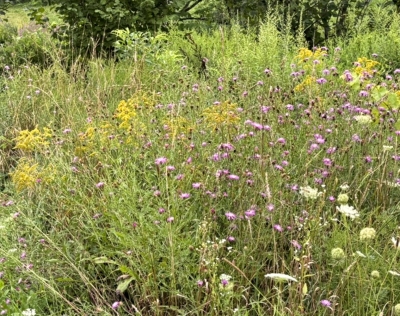

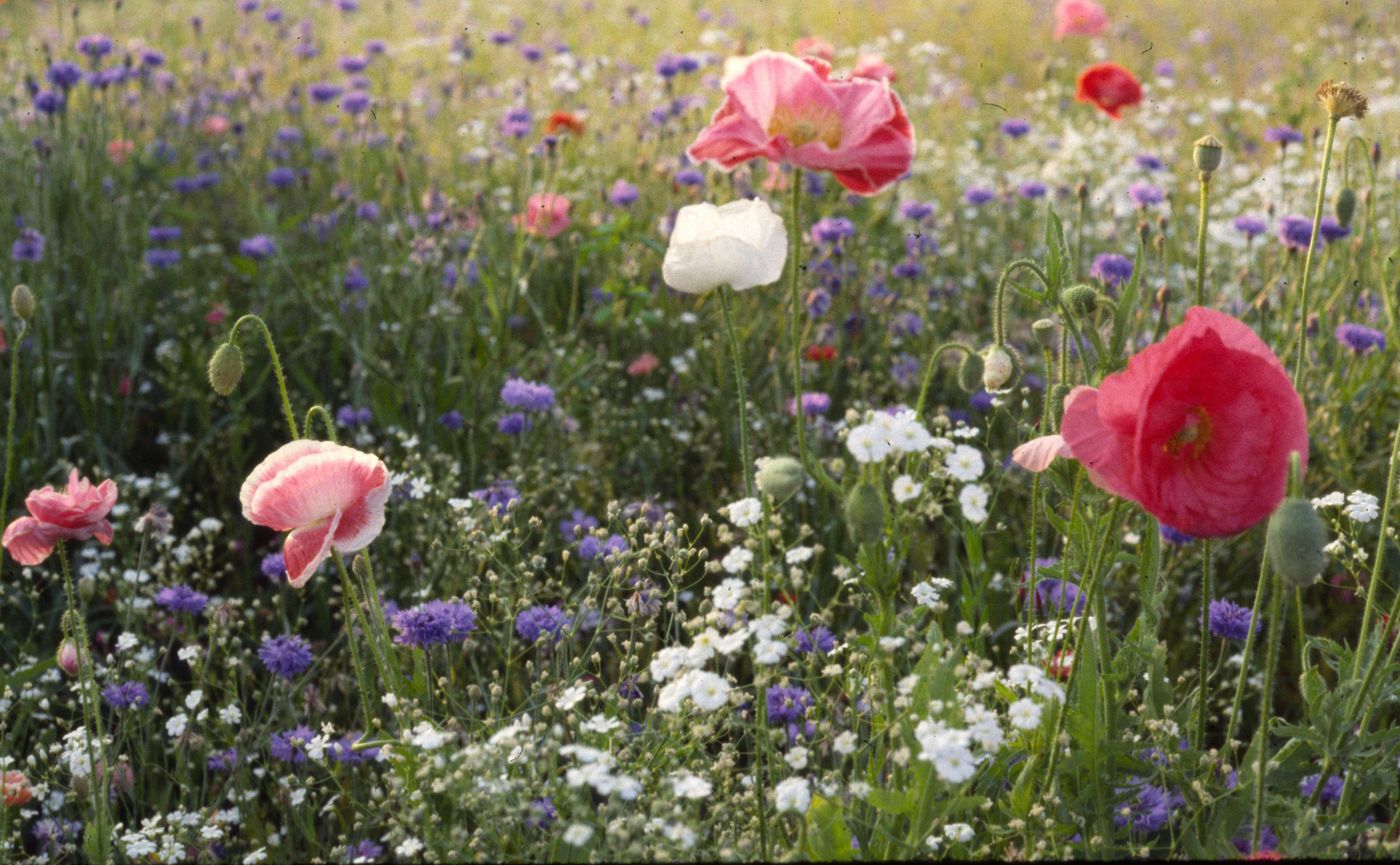
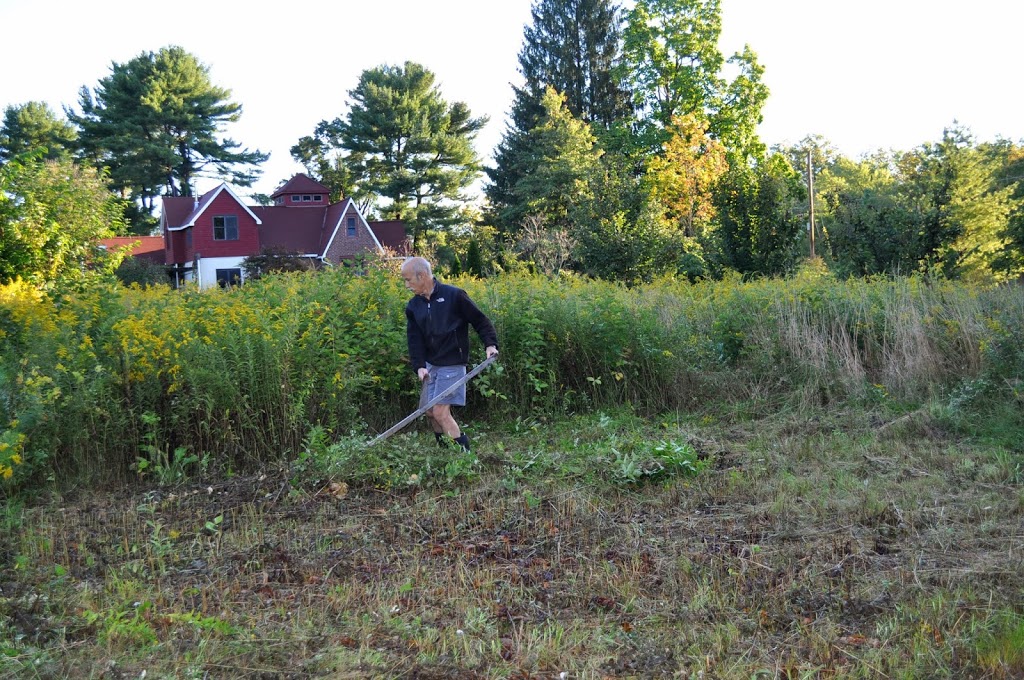

Hi! I am curious if you have had any issues with knapweed taking over your meadow. It’s moving into my meadow and I am not sure what to do.
Not at all.. It’s another welcome plant.
What a relief. Thanks for your response.
I was concerned because seems to be quite tenacious and it’s very difficult to remove. Other than that, pollinators like it. I’m happy to leave it.
Hi Lee –
Useful info. I have an area that I’m trying to reclaim, very small in comparison to your meadow, I’m still in the process of trying to eradicate all the poison ivy. Thinking of just putting a bunch of wood chips down. Now I like the idea of putting in, different color Menard as, it’s not the sunniest spot.
How about repeated mowing for a season or two?
Monardas